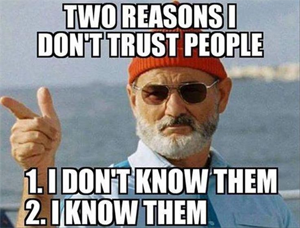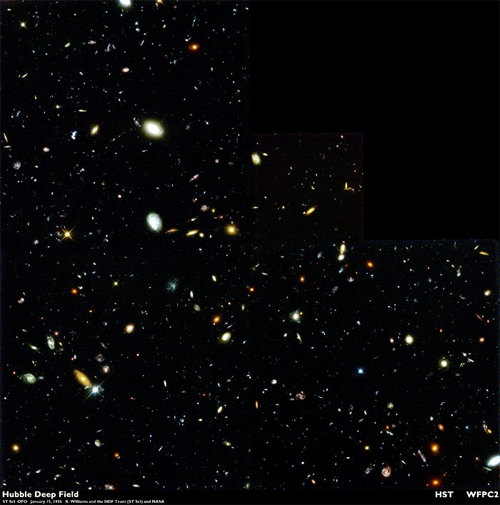|
Home Site Map Bulletin Board Site Search
AMERICAN BUDDHA May, 2019 Faith vs. Knowledge
by Charles Carreon
Some might say that without revelation there is no religion or spirituality, because spiritual wisdom cannot arise from the human mind. Wisdom must descend from a higher sphere, or it is not wisdom. According to this view, the Buddha was a divine being who took rebirth in the earthly plane to impart wisdom that would otherwise not arise in humankind. Tibetan Buddhism adopts this view that Buddha-wisdom is heaven-sent, and further infers that, as time passes, we enter into a “degenerate time” when Dharma teachings decline in potency. This is not an irremediable problem, though, because, in the Vajrayana lineage, Bodhisattvas incarnate even in degenerate times, and reveal “treasures” of Dharma, called “terma.” The treasure revealers are called “tertons.” When I was first taught this doctrine, back in the late seventies, Gyatrul Rinpoche emphasized that Dudjom Rinpoche was one of the rarest of Bodhisattvas, because he was a terton. His revealed teachings, commentaries, and sadhanas were compiled into what is called the Dudjom Tersar. Interestingly, tertons have become considerably more common since then. Although it stretches credulity, Shambhalians believe the Sakyong Mipham Mukpo is a terton, even though he barely received anything resembling a monastic education before Dilgo Khentse Rinpoche pushed him onto the Vajra seat vacated by the mortal expiration of Trungpa’s AIDS-carrying Regent, Thomas Rich. Although some Shambalians proclaim their “fierce loyalty” to the Sakyong and Shambhala’s “Enlightened Society,” among the more level-headed, the Sakyong’s terma have fallen into disrepute, like movies produced by Henry Weinstein, jokes told by Louis CK, and reruns of The Cosby Show. The Dudjom Tersar, on the other hand, continues to be a respected lineage. Thus, we see that the viability of a terma depends on the perceived legitimacy of the terton. This is the nature of revealed wisdom in general. Like fiat currency, that has value only so long as the issuers appears stable and the market agrees, revealed wisdom rises and declines in value without reference to any objective standard. Lately, the Sakyong’s terma is looking like one of those cryptocurrencies that burst into existence as vehicles for fraud when the spike in Bitcoin values made everything crypto seem golden. Or, as Bad Religion put it in their song, The Answer: Bad Religion wrote:
Belief is all that stands between the believer’s embrace of revelation, and its rejection. Small wonder, then, that so many hymns have been written to the sacred nature of belief, or as the religious prefer to speak of it – faith. St. Paul’s description of faith as “the substance of things hoped for, the evidence of things not seen” is the sort of formulation that reveals a legal mind turning to poetry to spin imputed substance from mental projection. Paul of Tarsus was, before his conversion to the Christian faith, a Roman prosecutor with a penchant for convicting heretics. He was, you might say, a witch prosecutor for the pagans. So when he turned over a new leaf, and became the defender of those he had previously persecuted, he simply used his old tricks to establish a new orthodoxy. Because “the substance of things hoped for” remains insubstantial, regardless of the intensity of one’s hope, and citing the “evidence of things not seen” will convince no one who is not already convinced. Paul’s statement is merely a tautological assertion that equates belief with knowledge.
However much it is idealized by religious teachers, very few people are willing to rely upon faith in matters that genuinely concern them. The most religious drug addict will not trust his dealer with twenty bucks for one un-observed minute – the drugs must change hands simultaneously with the cash. No one wants to see a priest emerging from the cockpit of the airliner they are about to board, smiling as he sprinkles holy water on the pilots. When you make your purchase, you want a receipt, because you may need to return it, and Wal-Mart doesn’t deal in faith. As the cruel and concise sign behind the redneck bar states simply: “In God we trust. All others pay cash.”
No, when we want to be sure of the outcome, we do not rely on faith, we rely on knowledge. There is a field of philosophy called “epistemology,” that is devoted to analyzing how human beings acquire knowledge, formulate concepts, derive inferences, and establish the boundaries of the knowable. In the centuries after the Buddha’s passing, Buddhist epistemology grew like a huge snowball, because knowledge, not faith, was the sole means of grasping the Buddha’s teachings.
The focus of the Buddhist epistemologists of renown – Vasubandhu, Dignaga, and Dharmakirti, was to establish what constitutes a valid basis of knowledge. One scholar has said that:
We have grown up in an era dominated by “scientific knowledge.” Since “scientia” is the Latin word for knowledge, the term “scientific knowledge” is really another way of stating “valid knowledge,” or “knowledge arrived at through reliable methods.” Thus, Buddhist epistemology and scientific inquiry are focused on achieving the same result – using the human mind to ascertain what is true. In school, we are supposed to learn about “the scientific method,” defined as “principles and procedures for the systematic pursuit of knowledge involving the recognition and formulation of a problem, the collection of data through observation and experiment, and the formulation and testing of hypotheses.” Let’s take these terms one at a time, and further define them, using the Merriam-Webster dictionary:
Buddhist epistemology would focus on the definition of “data,” because that is defined as “factual information,” and Buddhist epistemologists were very keen on determining what type of information we need to determine that something is a fact. I am going to shortcut the process and assert that the only type of information worthy of being called “factual,” and therefore worthy of being collected as “data,” is publicly verifiable information. Thus, we are necessarily talking about sensory observations that can be made by any person with functioning senses, the right tools, and the ability to use those tools. Thus, photographs from the Hubble telescope are publicly verifiable, even though few of us know how to use Hubble, and virtually none of us will ever be allowed to schedule any viewing time on this cosmic eyeball. Contrariwise, a vision, dream, intuition, hunch, opinion, or notion is not publicly verifiable, and will not constitute reliable data to use in the scientific method. What about “testing?” What does it mean to “submit a statement to such conditions or operations as will lead to its proof or disproof?” As a practical matter, in the scientific method, it means subjecting an experiment to the test of “reproducibility.” A scientific discovery gains credibility as the experimental results supporting the discovery can be reliably replicated. If a chemist devises a method for synthesizing a chemical, her method will be deemed valid when other chemists can repeat the synthesis. If other chemists can’t reproduce her results, she will have to return to the lab and find out why. She will have to examine her procedure closely, and discover why her work isn’t reproducible, because a foundation of the scientific method is that the laws that govern physical events are invariable, and the same causes will produce the same effects every time. And what is a “hypothesis” that we can subject to testing? A hypothesis is generated through “inductive reasoning.” We engage in inductive reasoning when we make inferences about things we don’t know by generalizing from known facts. Inductive reasoning sorts through likely explanations, eliminates explanations we think unlikely, which helps us to infer causes from effects. Thus, if we find huge, muddy tire tracks in the driveway, we infer that a large truck that has been driven in the mud came into your driveway. You may even infer the owner of the truck, if you happen to know someone who has a big truck with big tires and likes to take it out in the mud. Of course you could be wrong, and it could have been that two muddy pygmies hidden inside truck tires were dumped out of a helicopter that flew over your driveway, and then they rolled themselves away by using the big tires as vehicles for their escape. How would you test the hypothesis? Call your friend with the big truck? Ask your neighbor if she saw anything? Or maybe, if you have a surveillance video monitoring your driveway, check the playback. All of these methods rely on publicly verifiable information sources. Now the good thing about knowledge acquired by means of the scientific method, or reasonable approximations of it, is that the knowledge you gain will enable you to collaborate with other people. You can share this knowledge with them, and they can test it. They can also build on it, which is going to put it to the test of practical use. If you figure out a good recipe for vegan walnut chocolate chip cookies, someone could probably adapt that recipe to make good white-chocolate macadamia nut cookies. But like all good cooks know, ovens vary, and baking times may need to be adjusted for altitude, because for an experiment to be reproduced properly, all of the variables must be the same. Sometimes the application of existing knowledge to new problems produces surprising results, and this results in the expansion of knowledge, at the expense of destroying some assumptions. For a hundred years, from 1669 to 1770, chemists believed that burnable substances contained a substance or principle called “phlogiston,” that was liberated when it came into contact with fire. Lavoisier disproved the theory, and established that “combustion” occurs thanks to the interaction between oxygen and combustible elements, like carbon and sulfur. From 1917 - 1931, Einstein believed in a “homogeneous, static, spatially curved universe,” and was forced to abandon the model because it did not conform to the observed facts. Then he came up with an alternative model that was accepted for another sixty years, but has been superseded by newer theories.
One of the most dazzling expansions of human knowledge occurred in 1995, when astronomers came up with the awesome idea to take Hubble photographs of an area far beyond the stars of our own Milky Way by focusing for over 100 hours on an apparently empty region of sky in Ursa Major, taking 342 separate exposures that were compiled into the First Deep Field Image. Scientists could barely believe the results – not only was that little chip of blackness in Ursa Major not empty, it was stuffed with galaxies – tiny as blood cells in a pumping vein, and individually identifiable as the brothers and sisters of our own Milky Way. The Deep Field Image fundamentally alters all sense of the dimensions of space and time that we might have thought existed. Seeing this image, we realize that the universe is an inconceivably vast and enduring process that encompasses unending vistas of miracles. Whatever we are, we are part of this, and this knowledge is the gift of true science. Speaking from the control room of his observatory, an astronomer reduces this sense of gasping wonder to the calm contemplation that will drive future discoveries: “These impressive dips into the depths of space and time have allowed astronomers to glimpse the first steps of galaxy formation more than 10 billion years ago and are without doubt some of the great legacies of the Hubble Space Telescope.” The legacy of the Hubble Space Telescope is disruptive, as is the legacy of scientific study as a whole. Destroying mistaken understandings, poking holes in venerable theories, establishing the impossibility of matters previously deemed beyond question – these are real scientific achievements. For example, Hubble showed astronomers that our Universe is 14 Billion years old, and still expanding faster all the time – the reverse of what astronomers expected. So returning to where we began, discussing faith versus knowledge, we can see that science begins where faith ends. Like the faith-driven believer, the scientific thinker undertakes an act of belief when she ventures that her educated guess is correct. She is confident not because she believes that her guess is correct, but because she has educated herself about the subject by observing, and has invoked her inductive reasoning power by inquiring into the causes of what she has observed. She then makes her educated guess, and articulates a hypothetical, plausible cause-and-effect scenario to explain the observed facts. She has confidence in this process. Inductive reasoning makes the leap that bridges the gap between question and solution. The reasoning must be plausible, and it may well be wrong. It was plausible but wrong to infer that the fire hidden in a lump of coal or a stick of wood was due to “phlogiston,” when oxidation was the cause of combustion. Einstein certainly had some plausible basis for imagining a static Universe, but he eventually had to acknowledge that his hypothesis was erroneous. So as seekers of reliable knowledge, we take our best guess, and we test it. Testing is the road to success in science. You succeed by discovering that your hypothesis needs adjustment, your assumptions are mistaken, or your observations were incomplete. A scientist does not test to confirm the rightness of her beliefs, because beliefs are mere provisional assumptions, to be rejected whenever they fail to conform to the known facts. A scientist has confidence in the method of devising hypotheses and testing them for accuracy, and is energetic and skilled enough to use the method, so she lives in a fluid world of knowledge that she is always testing for accuracy. She knows that most of her knowledge is correct, and that some of her knowledge is incorrect, so in a sense, all knowledge is provisional. A believer cannot enjoy the confidence that the seeker of scientific knowledge possesses. The seeker of scientific knowledge has already come to grips with the fact that not all things are knowable. She has also realized that unless she is prepared to give up on the entire project of attempting to determine what is true, she needs to exclude evidence that isn’t publicly verifiable. Thus, what she learns can be shared with others, and they can have confidence in it, because it can be tested for accuracy. By basing our knowledge-search on publicly verifiable facts, our knowledge becomes part of the web of human knowledge that has helped us survive to this time. Understanding the web of knowledge in which we participate, we’re not nostalgic for certainty, and won’t give up accuracy by taking short cuts that would make our reasoning and conclusions less reliable. We’re building a vision of truth here, not a refuge for tender emotions.
|



